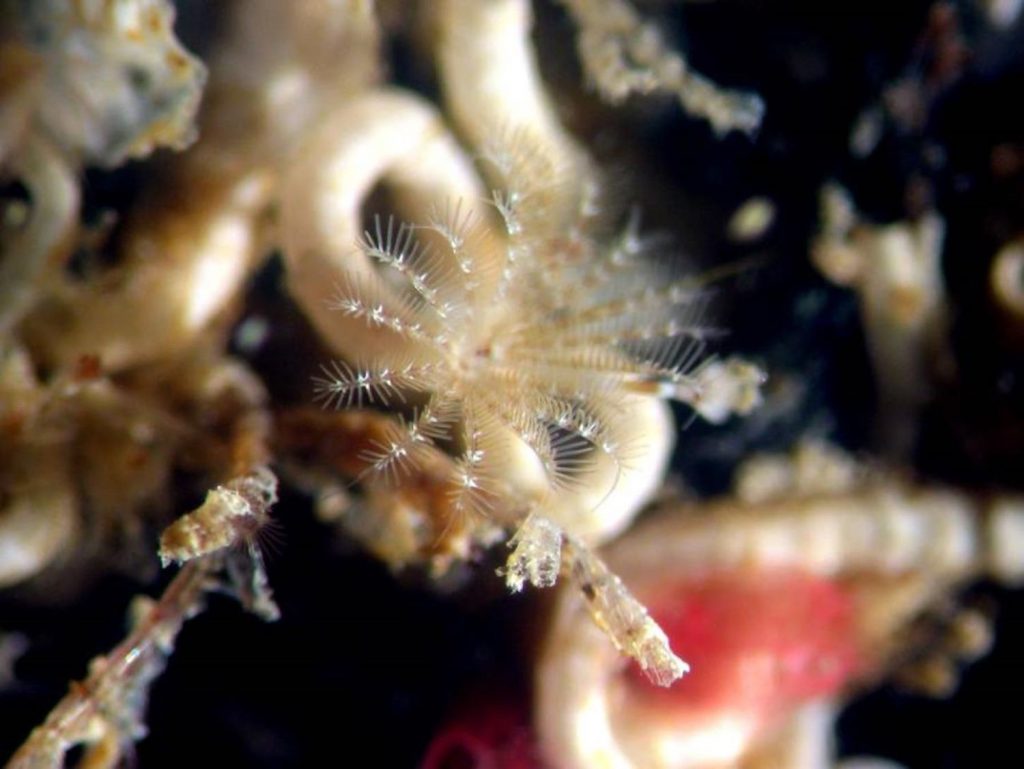UH: Mystery of Seafloor Metamorphosis Unlocked

A recently published study that was led by University of Hawai‘i at Mānoa researchers has revealed the mysteries of metamorphosis on the seafloor.
The study found that a large, complex molecule called lipopolysaccharide, which is produced by bacteria, is responsible for making larval marine tubeworms settle on the seafloor and begin the metamorphosis process. The study was published in the Proceedings of the National Academy of Sciences.
“This is a major milestone in understanding the factors that determine where larvae of bottom-living invertebrates settle and metamorphose,” Michael Hadfield, senior author of the paper and emeritus professor in the UH-Mānoa School of Ocean and Earth Science and Technology, said in a press release. “It is the key to understanding how benthic (underwater) communities are established and maintained on all surfaces under salt water, that is, on 71% of Earth’s surface.”
Most bottom-dwelling marine invertebrate animals, such as sponges, corals, worms and oysters, produce tiny larvae that swim in the ocean prior to attaching to the seafloor and transforming into juveniles. Most larvae are capable of staying in the larval stage for extended periods of time until they find the right spot to settle.
In the study, led by Marnie Freckelton, a postdoctoral researcher at the Kewalo Marine Lab, a unit of the Pacific Biosciences Research Center in the School of Ocean and Earth Science and Technology, the research team asked how do the ‘right spots’ cue larvae to settle and metamorphose? While researchers know biofilms, thin layers of bacteria, diatoms and small algae that blanket submerged surfaces, induce metamorphosis of a wide range of marine invertebrate larvae, the mechanism of induction remained poorly understood.



In laboratory experiments with larval tubeworms, the team found the organisms would not settle on clean surfaces. They required a cue from a surface biofilm.
“The team isolated a single bacterial species, Cellulophaga lytica, that could, when formed into surface biofilm, induce the worm larvae to settle, and then we asked: what is it about that particular bacterium that causes the larvae to settle and metamorphose?” Freckelton said in the press release.
With a series of experiments, the researchers eliminated protein-based bacterial compounds as potential settlement inducers and then, one by one, investigated various lipid-containing compounds and identified the trigger — lipopolysaccharide, which forms the outer coat of most marine bacteria. They discovered that while thousands of bacterial species make up the biofilm in any given marine habitat, they vary significantly from one location to another.
“In fact, we have different strains of the same bacterial species obtained from Kāneʻohe Bay and Pearl Harbor,” Hadfield, who has been a researcher at the Kewalo Marine Lab since 1968, said in the release. “Furthermore, we found in our lab that larvae of the coral Pocillopora damicornis, which is abundant in Kāneʻohe Bay, will settle only in response to the Kāneʻohe Bay strain of the bacterium. This is a breakthrough, because it tells us about the specificity of certain bacteria that guide and maintain a community of animals where they occur.”
The discovery can aid with a number of issues, such as coral reef restoration; mariculture of clams, oysters, mussels and possibly shrimp and crabs; and biofouling, which is the accumulation of animals and algae on ship hulls that cost the world’s navies and shipping industry billions of dollars a year.
“Hopefully, we can help these efforts by discovering the bacterial molecules — likely lipopolysaccharide — that guide the settlement of lab-reared coral in vulnerable reef areas or oyster larvae in places like Pearl Harbor to employ their filtering capacities to clear the waters, as has been done already in Chesapeake Bay,” Hadfield said in the press release. “Further, our research may contribute directly to the development of ship hull coatings that resist biofouling.”






